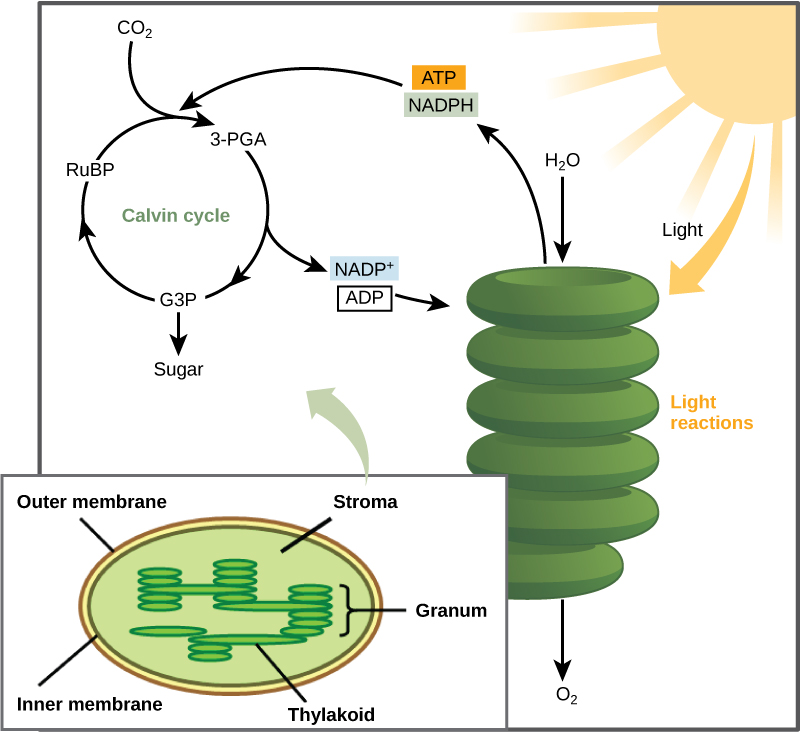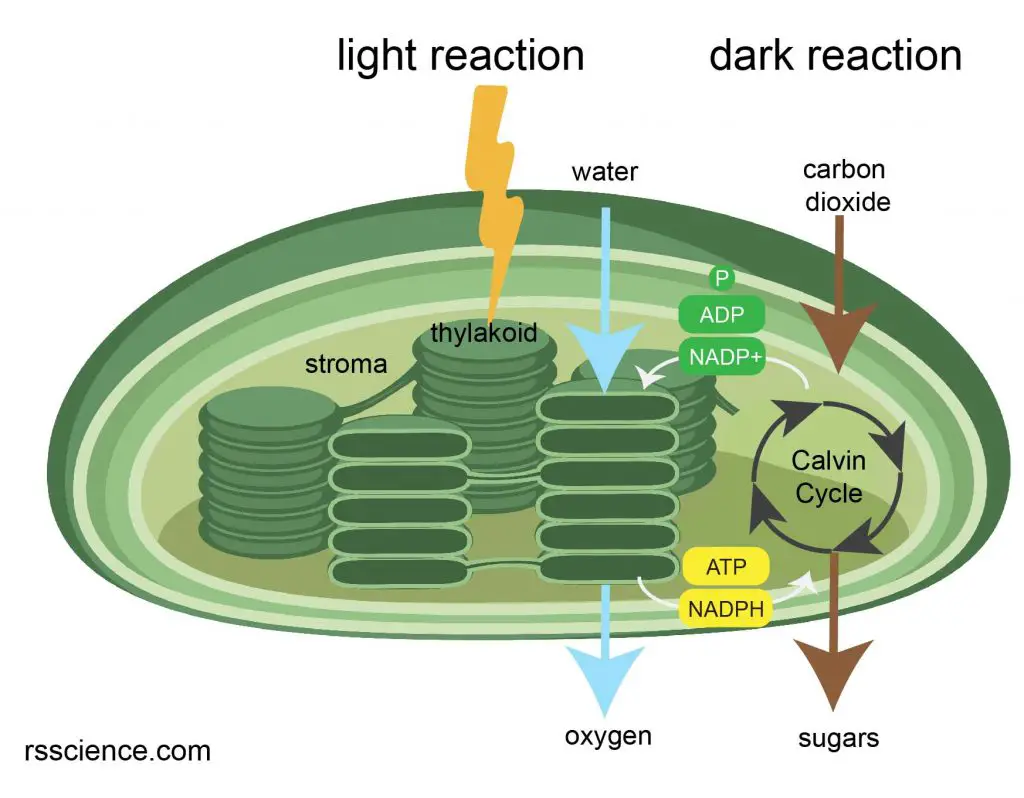What is the function of stroma in plants? This question delves into the intricate world of plant cells, specifically the chloroplasts, the powerhouses of photosynthesis. Within these organelles lies the stroma, a semi-fluid matrix that plays a crucial role in the intricate process of converting sunlight into energy, fueling life on Earth.
The stroma, a complex mixture of enzymes, proteins, and other molecules, acts as a bustling hub for essential biochemical reactions. Its structure and composition are finely tuned to support the light-independent reactions of photosynthesis, where carbon dioxide is transformed into glucose, the primary source of energy for plants and ultimately, for all life.
What is Stroma?

Yo, so you know how plants are like the OG energy producers, right? They make their own food through photosynthesis, which happens in their chloroplasts. Well, the stroma is like the busy hub inside the chloroplast where all the magic happens.
Stroma Location
The stroma is a thick fluid that fills the space between the thylakoid membranes within a chloroplast. Imagine it like the cytoplasm of the chloroplast, but with its own special sauce. It’s a dense, jelly-like substance that’s filled with enzymes and other molecules essential for photosynthesis.
Stroma Components and Functions
The stroma is packed with a bunch of important stuff that makes photosynthesis happen:
- Enzymes: These are like the master chefs of the stroma. They catalyze the reactions that convert carbon dioxide into sugars, which is the main goal of photosynthesis. Think of it as turning sunlight into food for the plant.
- DNA: Yep, the stroma has its own DNA! This means it can make its own proteins, which are needed for all the processes happening inside the chloroplast. It’s like a mini-brain for the chloroplast.
- Ribosomes: These are the protein factories of the stroma. They use the DNA instructions to build proteins, which are essential for photosynthesis and other chloroplast functions. It’s like a protein assembly line.
- Starch Granules: These are like the storage lockers for the stroma. They hold the excess sugars produced during photosynthesis, ready to be used by the plant when needed. It’s like the plant’s pantry.
Role in Photosynthesis
Stroma is the site of the light-independent reactions of photosynthesis, also known as the Calvin cycle. This is where the energy captured during the light-dependent reactions is used to convert carbon dioxide into glucose, the primary source of energy for plants.
The Calvin Cycle
The Calvin cycle is a series of biochemical reactions that take place in the stroma. These reactions are driven by the energy stored in ATP and NADPH, which are produced during the light-dependent reactions. The Calvin cycle can be divided into three main stages:
- Carbon fixation: Carbon dioxide from the atmosphere is incorporated into an organic molecule, RuBP (ribulose bisphosphate). This reaction is catalyzed by the enzyme RuBisCO, which is the most abundant protein on Earth.
- Reduction: The carbon atoms in RuBP are reduced to form glucose. This process requires energy from ATP and reducing power from NADPH.
- Regeneration: RuBP is regenerated from the products of the reduction stage. This step ensures that the cycle can continue.
Key Enzymes in Stroma
The stroma contains several key enzymes that are essential for the Calvin cycle. Here are some of the most important:
- RuBisCO: This enzyme catalyzes the first step of the Calvin cycle, the fixation of carbon dioxide.
- Phosphoribulokinase (PRK): This enzyme catalyzes the phosphorylation of ribulose-5-phosphate (Ru5P) to form RuBP.
- Glyceraldehyde-3-phosphate dehydrogenase (GAPDH): This enzyme catalyzes the reduction of 1,3-bisphosphoglycerate (1,3-BPG) to glyceraldehyde-3-phosphate (G3P).
- Fructose-1,6-bisphosphatase (FBPase): This enzyme catalyzes the dephosphorylation of fructose-1,6-bisphosphate (FBP) to fructose-6-phosphate (F6P).
- Sedoheptulose-1,7-bisphosphatase (SBPase): This enzyme catalyzes the dephosphorylation of sedoheptulose-1,7-bisphosphate (SBP) to sedoheptulose-7-phosphate (S7P).
Stroma and Other Organelles

Stroma, the gel-like matrix within chloroplasts, plays a crucial role in photosynthesis, but it’s not a lone wolf. It’s part of a dynamic team, working alongside other plant cell organelles to keep the plant alive and kicking. Let’s dive into how stroma interacts with these other organelles and how energy and materials flow between them.
Comparison of Stroma with Other Organelles
Stroma, cytoplasm, and the nucleus are all vital components of plant cells, each with unique functions.
- Stroma: The primary function of stroma is to house the reactions of the Calvin cycle, which converts carbon dioxide into sugars using energy from sunlight. It’s like the factory floor where photosynthesis’s heavy lifting happens.
- Cytoplasm: Cytoplasm is the jelly-like substance that fills the cell and houses various organelles. It’s the cell’s main transport hub, facilitating the movement of materials and molecules throughout the cell. It’s like the city’s bustling streets where everything flows.
- Nucleus: The nucleus is the cell’s control center, containing the genetic material (DNA) that dictates the cell’s functions. It’s like the city hall, where the blueprints for the city are kept and the mayor makes decisions.
Stroma’s Interaction with Other Organelles within the Chloroplast
Stroma is not just a passive player within the chloroplast. It’s a busy bee, constantly interacting with other organelles to ensure smooth operation.
- Thylakoid Membranes: Stroma surrounds the thylakoid membranes, which are the sites of light-dependent reactions. Energy captured by the thylakoids is transferred to the stroma in the form of ATP and NADPH, the fuel for the Calvin cycle. It’s like a power plant supplying energy to the factory.
- Ribosomes: Stroma contains ribosomes, the protein factories of the cell. These ribosomes synthesize proteins needed for the Calvin cycle and other chloroplast functions. It’s like the factory’s assembly line, building the machines needed for production.
- Chloroplast DNA: Stroma contains its own DNA, which codes for some of the proteins involved in photosynthesis. It’s like the factory’s own blueprint for its specific operations.
Flow of Energy and Materials
Energy and materials are constantly moving between stroma and other organelles.
- Energy Flow: Light energy captured by the thylakoid membranes is converted into chemical energy in the form of ATP and NADPH. These energy carriers then move from the thylakoids into the stroma, powering the Calvin cycle. It’s like a conveyor belt transporting energy from the power plant to the factory.
- Material Flow: Carbon dioxide enters the chloroplast from the cytoplasm and is incorporated into sugars during the Calvin cycle. These sugars can then be transported out of the chloroplast to other parts of the plant for growth and energy production. It’s like raw materials entering the factory and finished products leaving for distribution.
Stroma in Different Plant Types: What Is The Function Of Stroma In Plants

Stroma, the gel-like matrix within chloroplasts, is not a static structure but exhibits variations across different plant species, reflecting their adaptations to diverse environments. These variations influence the efficiency of photosynthesis and overall plant survival.
Stroma Adaptations in Different Plant Environments
The structure and function of stroma can vary significantly depending on the plant’s environment. For example, desert plants, which face water scarcity, often have stroma that are more compact and densely packed with photosynthetic machinery. This adaptation allows them to maximize photosynthesis with minimal water loss. In contrast, aquatic plants, which have access to abundant water, often have stroma that are more loosely organized and contain larger thylakoid membranes.
This structure facilitates efficient gas exchange and carbon dioxide uptake from the surrounding water.
- Desert Plants: Stroma in desert plants are often characterized by their compact structure, with tightly packed thylakoid membranes. This allows them to maximize photosynthetic efficiency with minimal water loss. For example, cacti, which are adapted to arid environments, have stroma that are highly efficient in capturing and utilizing sunlight, enabling them to thrive in harsh conditions.
- Aquatic Plants: Aquatic plants, which live in water, often have stroma that are more loosely organized with larger thylakoid membranes. This structure facilitates efficient gas exchange and carbon dioxide uptake from the surrounding water. For example, water lilies, which float on the surface of water, have stroma that are specifically adapted to efficiently absorb carbon dioxide from the water and utilize it for photosynthesis.
Stroma Adaptations in Response to Environmental Changes, What is the function of stroma in plants
Plants can also exhibit dynamic changes in their stroma structure in response to environmental changes. For example, when exposed to high light intensity, plants may increase the density of thylakoid membranes within their stroma to protect themselves from photodamage. Conversely, under low light conditions, plants may reduce the density of thylakoid membranes to maximize light capture.
- High Light Intensity: When exposed to high light intensity, plants may increase the density of thylakoid membranes within their stroma. This adaptation helps to dissipate excess light energy, preventing photodamage. For example, plants growing in sunny environments often have stroma with a higher density of thylakoid membranes compared to plants growing in shady areas.
- Low Light Intensity: Under low light conditions, plants may reduce the density of thylakoid membranes within their stroma. This adaptation allows them to maximize light capture and improve photosynthetic efficiency. For example, plants growing in shaded environments often have stroma with a lower density of thylakoid membranes, enabling them to effectively utilize the available light.
Understanding the function of stroma in plants provides a deeper appreciation for the interconnectedness of life on Earth. The stroma’s role in photosynthesis, its intricate interactions with other organelles, and its adaptations to different environments highlight the remarkable complexity and efficiency of plant cells. As we continue to unravel the secrets of this vital structure, we gain valuable insights into the fundamental processes that sustain life.
FAQ
What is the difference between stroma and cytoplasm?
Stroma is the fluid-filled space within a chloroplast, while cytoplasm is the fluid-filled space within the entire cell. Stroma is specifically involved in photosynthesis, while cytoplasm is involved in a wider range of cellular processes.
How does stroma contribute to the overall energy production of a plant?
Stroma facilitates the conversion of carbon dioxide into glucose, which is a form of chemical energy. This glucose is then used by the plant for growth, reproduction, and other metabolic processes.
Are there any diseases or conditions that affect the stroma?
While direct diseases affecting stroma are rare, disruptions in the chloroplast’s function, such as those caused by environmental stressors like pollution or herbicides, can impact the stroma’s ability to carry out photosynthesis, leading to impaired plant growth.






